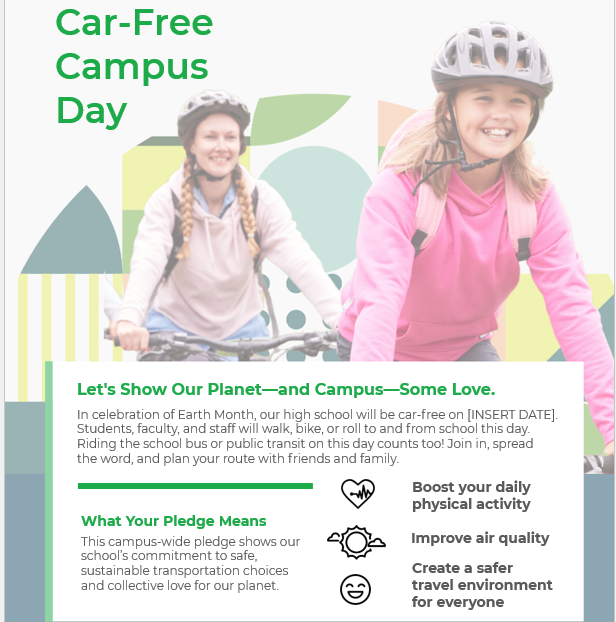Considering High School Students in Transportation Demand Management (TDM)
With the passing of the Infrastructure Investment and Jobs Act of 2021 (IIJA), the Safe Routes to School (SRTS) Program was codified, and funding was expanded to support high school students, among other benefits. This opened a world of opportunities for state and local SRTS Programs nationwide.
With the excitement of a new SRTS audience also comes the need for programs to create innovative materials for marketing, education, and incentives. Despite nearly three years of working with high schools, many SRTS programs are continuing to learn about their audience and refining their messaging.

Most high school students start 9th grade with minimal control of their daily school commute. Within two to three years, they transition to young adults with driver’s licenses and independent mindsets. Students start to make their own transportation decisions even before getting a license, which makes them prime candidates for TDM messaging.

Similar to employees enjoying the benefits of an employer-based TDM program, high school students respond to clear and simple messaging and incentive-based behavior change opportunities. Limited time and resources for both the students and faculty/staff have shown that successful SRTS Programs should be student-led but with strong support from the school administration. Below are some examples of activities that can support a successful hybrid SRTS/TDM Program in a high school:
- Provide volunteer hours for high school students to educate elementary and middle school students on pedestrian and bike safety. Many schools have graduation requirements that include volunteer hours, making this a win-win scenario for high school students and their younger peers.
- Introduce video and poster contests with themes covering bike/ped/driver safety, mode choice, or rules of the road. These contests can often be incorporated into the curriculum for art or media studies classes, supporting collaboration and creativity.
- Promote after-school clubs such as bike maintenance and route planning, walking clubs, and transportation planning/engineering-focused clubs that evaluate the built environment around the school. These clubs will allow students to explore a different set of interests that support active transportation and roadway planning.
- Establish all-school events such as “Car-Free Campus Day,” Earth Day Celebrations, and “try-it” days for walking school buses, bike trains, carpools, or transit/bus rides to school. These events, planned by students, develop leadership skills, explore the benefits of active transportation, and promote mode shift.
Ultimately, the success of a great SRTS High School Program relies on messaging and programs that resonate, incentivize, and promote lasting change. Surveys and focus groups with high school students will allow your program to target this new audience and highlight what is meaningful to them.
Diane Hanson, TDM-CP, PMP
Project Manager, Sustainable Mobility
Deputy Operations Director, East Domestic
AECOM

